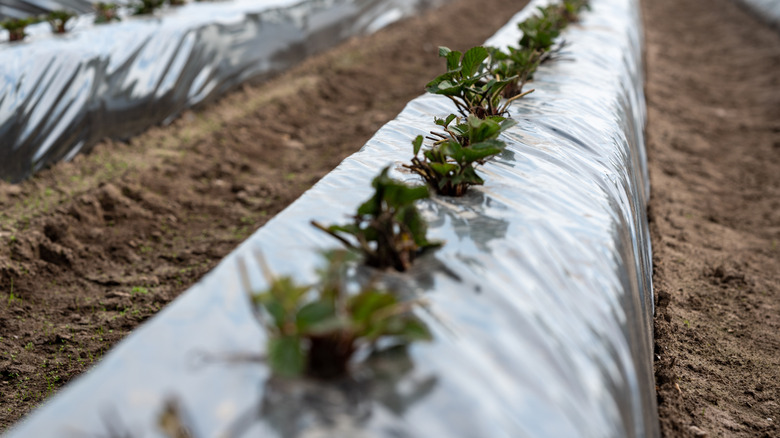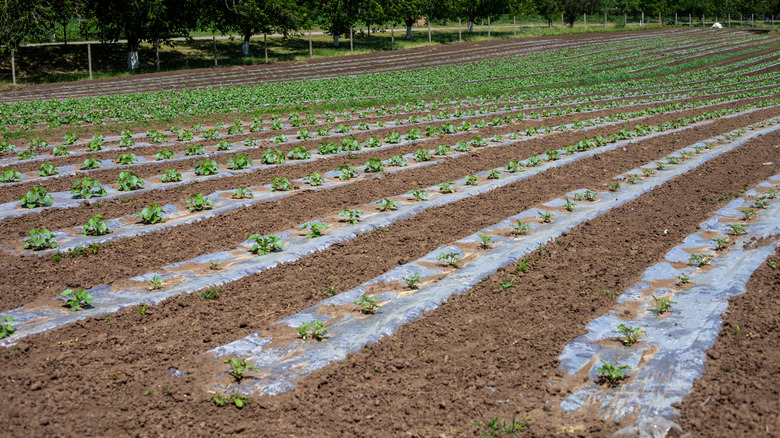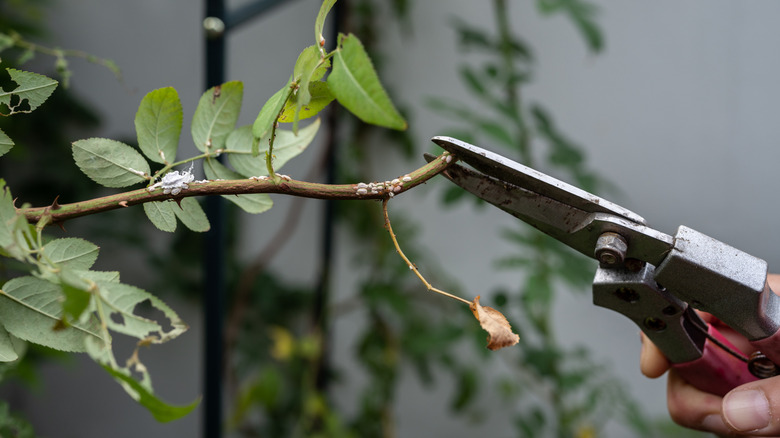Is Solarizing The Trick To Keeping Mealybugs Away? Here's What To Know
Mealybugs are relentless pests that drain energy from your plants and are notoriously hard to get rid of. You'll often find them clustered on leaves, stems, and even roots, weakening plants and frequently returning despite repeated efforts. If you're looking for a chemical-free approach to get rid of mealybugs in your garden, you might be considering soil solarization. This method traps heat in the soil using clear plastic to kill off pests and pathogens. But when it comes to mealybugs, it only works in limited cases.
Most mealybugs live above ground, where solarization has no effect. However, some species, like root mealybugs, spend part of their life cycle in the soil. In those situations, heating the upper soil layers through solarization may help reduce early-stage populations. So, if mealybugs keep reappearing after replanting or showing up near the root zone, solarizing could offer some benefit. But for most infestations, you'll need other strategies. Here's a breakdown of the pros and cons, and what to try instead.
Pros and cons of solarizing for mealybugs
When mealybugs are in their soil-dwelling stages (such as root-feeding nymph), the intense heat can reduce their numbers. As a bonus, solarizing also speeds up the breakdown of organic matter in the soil, making nutrients more available to your plants. And since it doesn't have any chemicals, it's the least harmful way to kill weeds, fungi, and other soil-borne pests. This leads to fewer plant diseases and better plant growth overall.
That said, solarization has certain drawbacks as well. First off, it won't affect mealybugs living on stems or leaves. And while it targets harmful soil pathogens, it can also impact beneficial microbes, though many of them may bounce back over time. Another limitation of solarization is that it's not a quick fix. You'll need several weeks of strong, direct sun to heat the soil effectively. If you're in a cooler or cloudy climate, you may not get reliable results you're hoping for.
What to do instead of solarizing
You can manage mealybugs using physical methods, and, if necessary turn to chemical options as a last resort. You can start with a common household item that will solve all of your mealybug problems: rubbing alcohol. Dip a cotton swab in 70% rubbing alcohol and dab it directly onto the bugs. This kills them on contact and is ideal for small infestations. For more severe cases, remove the most infested parts of the plant, or if necessary, discard the entire plant to prevent the pests from spreading.
For broader control, use insecticidal soap, horticultural oil, or neem oil. Spray onto affected areas, making sure to coat leaf undersides and crevices where mealybugs like to hide. Reapply every seven to 14 days as needed. Pro tip: Always test any treatment on a small section of the plant first to check for plant damage. And finally, make it a habit to inspect your plants regularly, especially in warm indoor areas or greenhouses where mealybugs thrive.


